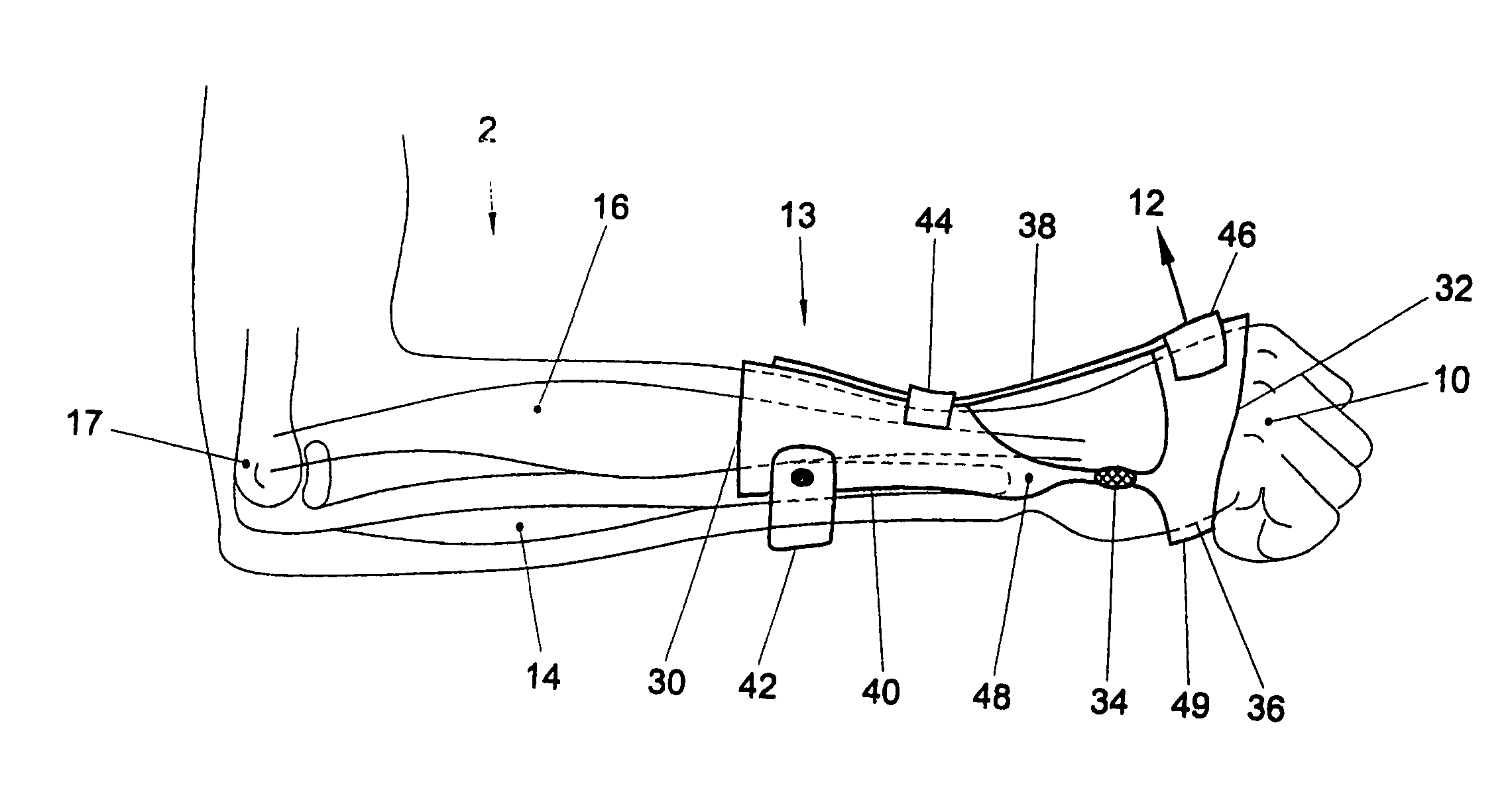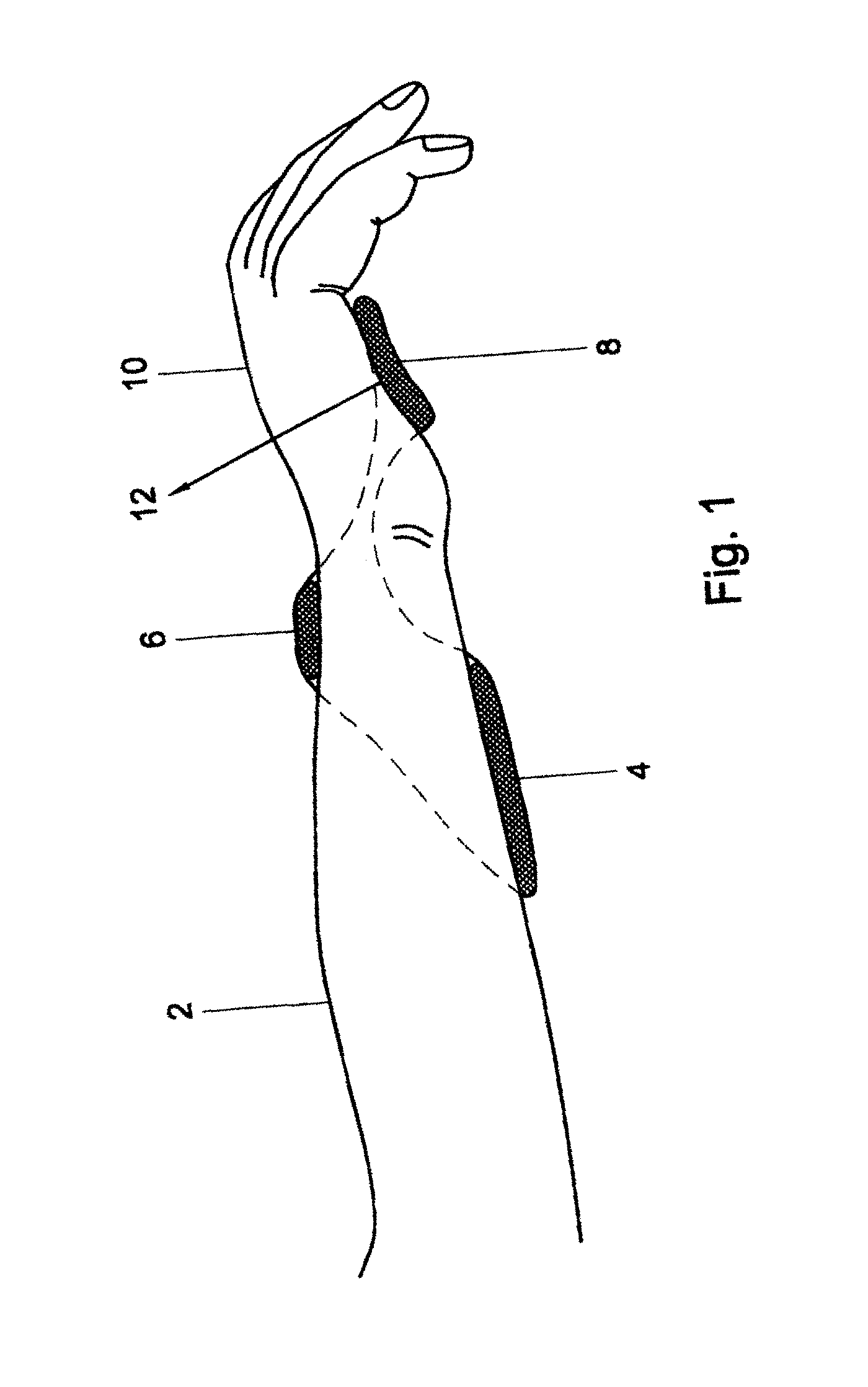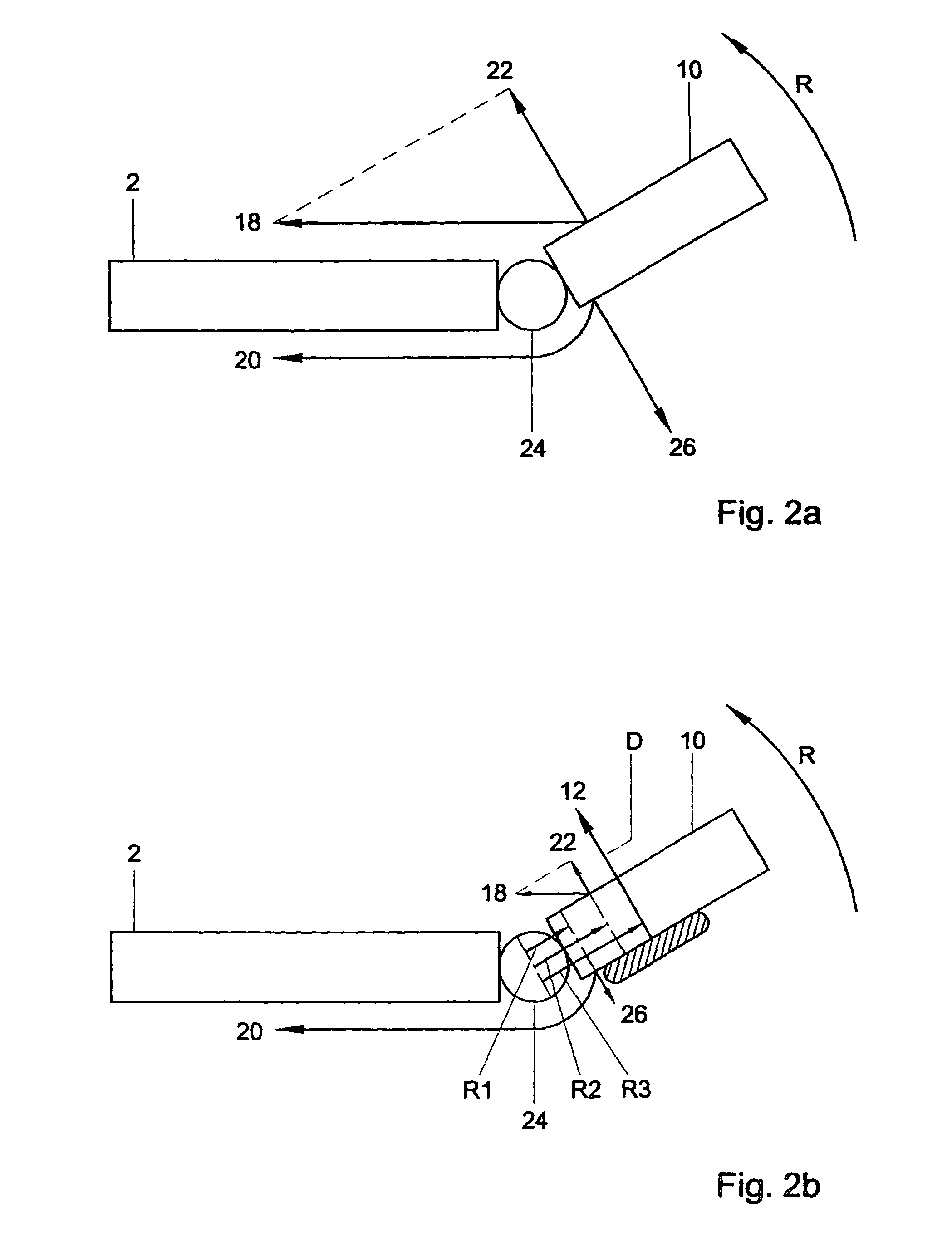Wrist brace
- Summary
- Abstract
- Description
- Claims
- Application Information
AI Technical Summary
Benefits of technology
Problems solved by technology
Method used
Image
Examples
Embodiment Construction
[0028]FIG. 1 shows a forearm 2 on which three pressure points 4, 6 and 8 are indicated. The first pressure point 4 is located on the underside of the forearm, the second pressure point 6 is located on the wrist of the forearm and the third pressure point 8 lies against the palm of the hand of the hand 10. By applying forces to these at least three pressure points, a force component Faid 12 is applied to the palm of the hand, such that the hand 10 is pressed in a direction towards the upper side of the hand belonging to the palm of the hand. This is further elucidated in FIG. 3a. In FIG. 3a, an aid 13 is shown which is secured to a forearm 2. The flexor musculature 14 (flexor muscle) is a flexor which is in antagonistic action with the extensor musculature 16. The extensor musculature 16 (extensor muscle) is an extensor which is connected to the lateral epicondyle 17 in the elbow. The force component Faid 12 has as a result that flexor musculature 14 in the forearm 2 has to be flexed...
PUM
 Login to View More
Login to View More Abstract
Description
Claims
Application Information
 Login to View More
Login to View More - R&D
- Intellectual Property
- Life Sciences
- Materials
- Tech Scout
- Unparalleled Data Quality
- Higher Quality Content
- 60% Fewer Hallucinations
Browse by: Latest US Patents, China's latest patents, Technical Efficacy Thesaurus, Application Domain, Technology Topic, Popular Technical Reports.
© 2025 PatSnap. All rights reserved.Legal|Privacy policy|Modern Slavery Act Transparency Statement|Sitemap|About US| Contact US: help@patsnap.com



